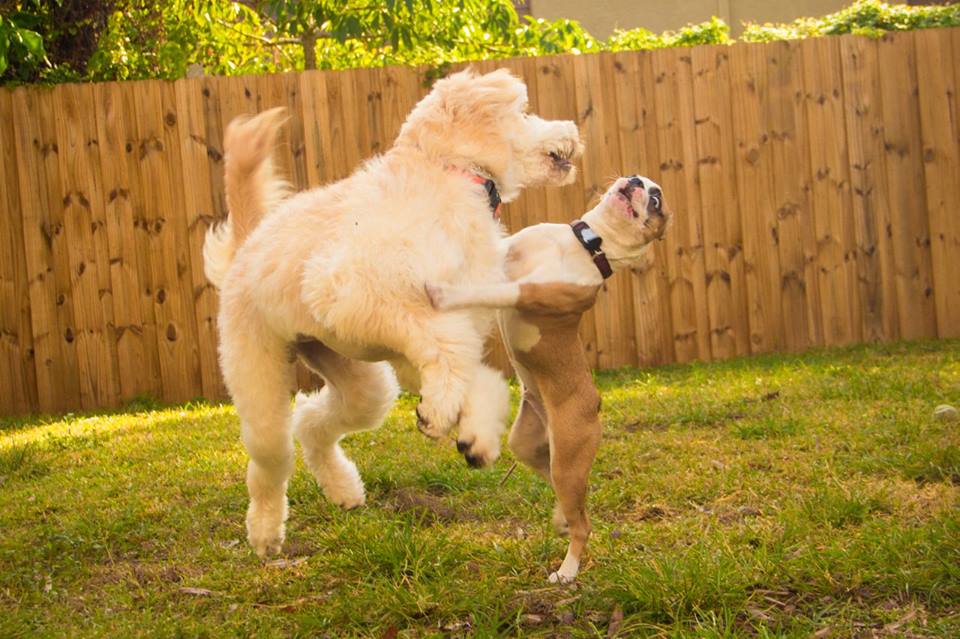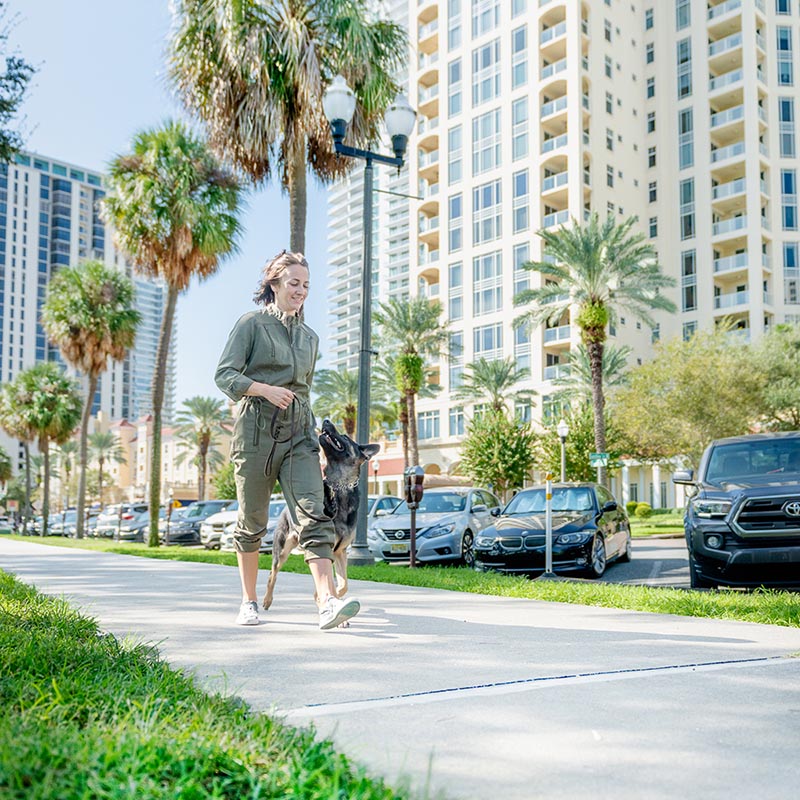The scariest thing that can happen as a dog owner is having your dog attacked by another dog. Even the thought of this is nerve-wracking for most dog owners. Beyond the physical damage, dog attacks can create a lot of post-traumatic mental stress for your dog. This event can make them fearful of strange dogs and even create reactivity as they try to defend themselves from a potential future attack.
Recovering From Dog Attacks
Directly after an attack, it’s essential to call and report the incident. Notifying animal services helps to keep others safe and holds the owner responsible for the actions or irresponsibility that led to the attack.
Overwhelming your dog after an attack with other dogs in a group setting, such as inside the dog park or daycare, or letting them meet on the leash, will only create more anxiousness, especially after their experience. Your dog needs the ability to get away and avoid unwanted interactions. The uncontrolled aspect of these environments with unknown dogs may compound stress, and your dog may even lash out in fear of being attacked again.
The most important thing to do for your dog after an attack is to create good experiences with dogs. We want to remind our dogs that not every dog is out to get them and that we will protect and advocate for them. Just like puppy socialization, this involves exposing them to dogs in a controlled way, such as outside a dog park or having a playdate with a dog they are familiar. I suggest starting with distance exposure before progressing to any dog play, progressing when the dog appears ready. Our goal is neutrality when our dog encounters other dogs.
Control all your dog’s exposures to give them the assurance and safety they need to overcome their fear. For all future interactions, always discourage meeting another dog when on a leash walk. It gives your dog the impression that you will not advocate for their space, and being unable to escape due to the leash gives them only one option – to defend themselves. Instead, allow your dog to meet other dogs on the outside fence of a dog park. This interaction gives the dog control of the exchanges. It is a safe and controlled way to meet lots of dogs.
Here is a video on properly socializing your dog outside a dog park.
An important thing to remember is that not all dogs will react the same to a dog attack. Younger dogs often can “bounce back,” and genetics play a significant role in adaptability to bad situations. A naturally dog-friendly, happy-go-lucky breed like a Labrador Retriever may not be as affected by a dog attack and can easily play with a known friend immediately. Dogs who are more sensitive, high-strung, or less dog friendly may not be as forgiving and be more apt to distrust all other dogs or display reactivity. No matter the breed, a stable temperament is an integral part of post-attack recovery, as their inborn temperament helps to “pull them through” negative experiences that may impact sensitive dogs on a grander scale. It is essential to understand your dog’s unique temperament and how it will affect its reaction and your approach after a dog attack.
Preventing Dog Attacks
Prevention is the best way to avoid a dog attack. Practicing prevention looks like using deterrent devices, shielding your dog with your body, and preventing high-risk situations like dog parks. Know your neighborhood, and avoid areas where dogs charge fences, as an open gate can lead to disaster due to the buildup of frustration. Stay alert and watch out for dogs in the distance that look off-leash. Anticipating and preparing for the worst-case scenario will help you keep your dog safe physically and mentally and show them that you are a leader they can trust.
Deterrent devices can be a great way to keep your dog safe from another dog without causing physical harm. Air horns are a great tool to repel off-leash dogs approaching as they startle most dogs not acclimated to them and are usually enough to scare off the offender without harm. Getting your dog desensitized to the air horn means they remain calm and confident while their would-be attacker flees.
Here is a link to training your dog to be comfortable with the air horn.
Our body language is also one of the best communication tools. Creating space for your dog using your body is another way to advocate for and reinforce your trusting relationship. Don’t be afraid to be confident and forceful if needed with your body language and gestures. Remember, your dog’s mental and physical well-being is paramount.
Here is a video showing what to do when an off-leash dog approaches.
A dog attack or even the idea of this can be a terrifying event for dogs and owners both. However, it doesn’t have to mean that your dog is never comfortable around other dogs again. Taking the proper steps to expose your dog to other dogs in a safe, controlled way and practicing prevention are the best ways to help your dog regain their confidence and look to you as a responsible protector. Be the best leader for your dog; it will gain the confidence to face its fears. If you need help past this blog in helping your dog recover from an attack, reach out to us at The Doghouse, LLC.



